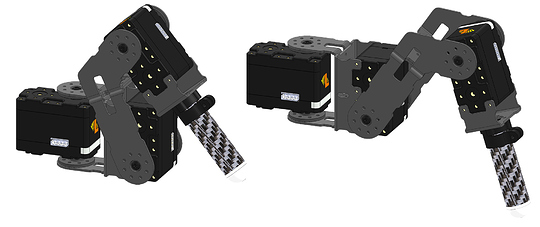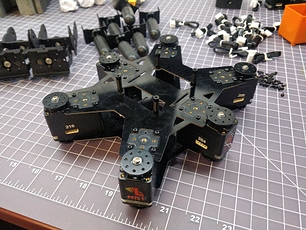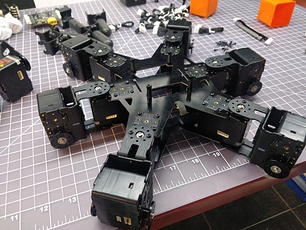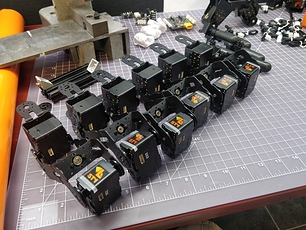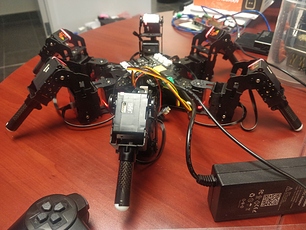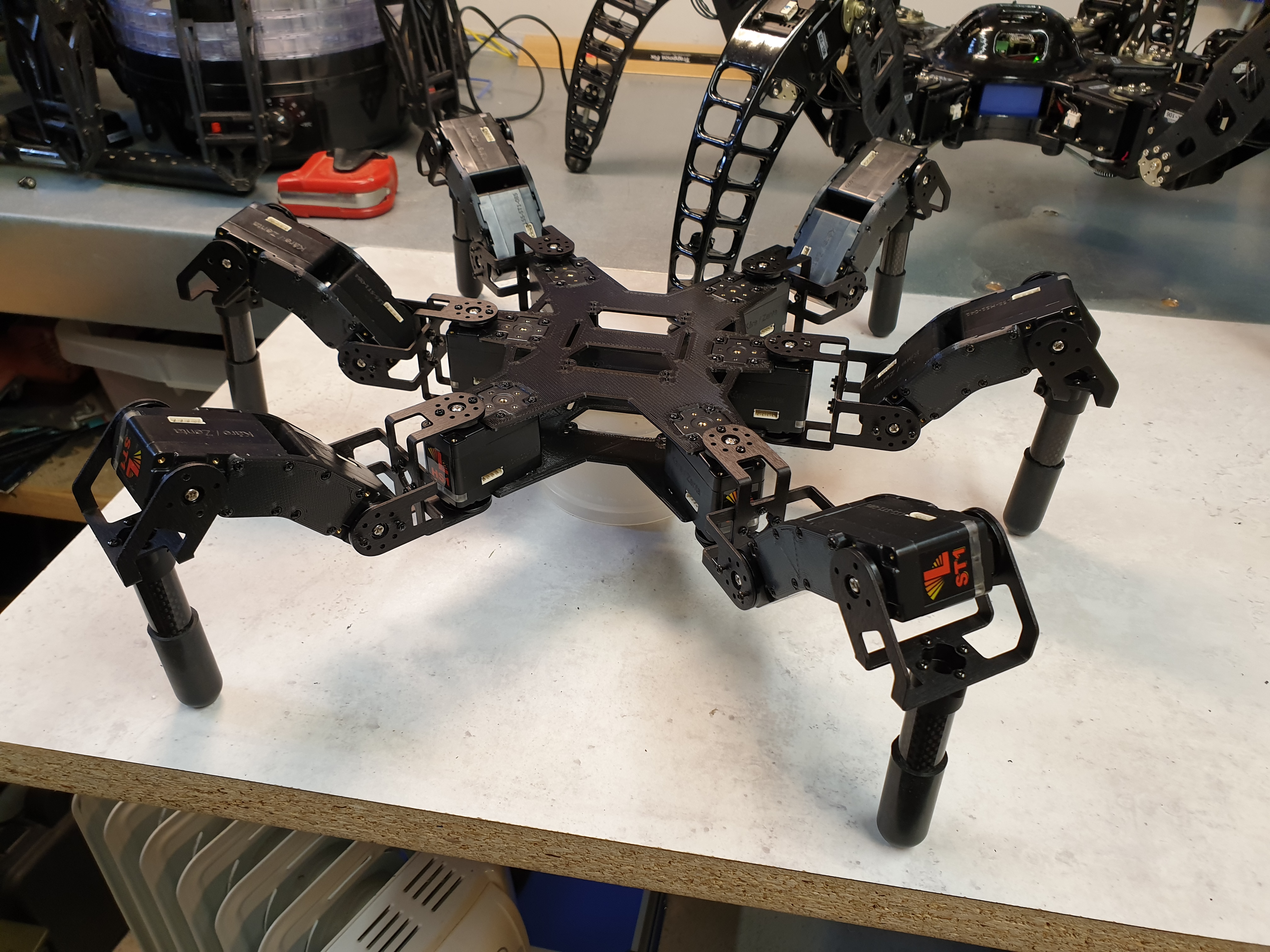Welcome one and all! With the launch of the Lynxmotion Smart Servo (LSS) motors, it was only a matter of time before legged robots would be developed around them. This thread is intended to allow all those interested in the project to follow the design progress, offer insights and help in the development of these robots. The main objective is develop and ultimately release both an 18 degree of freedom (DoF) “insect” style hexapod and a 12 DoF “insect” style quadruped using the LSS actuators and much of the SES V2 bracket and electronics system. Using a Raspberry Pi 4 as the “brain”, running ROS 2.0, we hope participants here will help create the most advanced, adaptive and responsive inverse kinematics system for this type of robot.
FAQ
- GENERAL - Why only develop one of each robot?
It is difficult to support many different robots in terms of documentation, hardware and software (configurations) for what amounts to only minor differences in the design. Other types of robots will be developed as well, but the focus of this thread are legged robots with three degree of freedom “insect style” legs. Should the code allow for an octopod (eight legs) design and allow for configurable parameters (body dimensions, leg dimensions etc), that would be great.
- GENERAL - License?
Yes, the license under which the software is being developed is GPL 3.0
Link: https://www.gnu.org/licenses/gpl-3.0.en.html
- MECHANICAL - Why not create open hardware?
The official Lynxmotion designs and kits will make use of the Lynxmotion Servo Erector Set (SES) system to help ensure the robots can be assembled uniformly, and work as expected. Customers are free to create their own hardware, but custom systems are always more difficult to support. CAD files for more and more Lynxmotion parts, including the SES V2 brackets are available on the Lynxmotion Wiki.
- MECHANICAL - Can I use other RC or smart servos?
Using the Lynxmotion Smart Servos for the designs ensures everyone is “on the same page”, and development is not split between many different systems or communication protocols / methods. Unlike RC servos, the smart servos offer various different output / feedback, most notably position.
- FIRMWARE - Why isn’t the firmware used in the servos open source?
Considerable development and resources went into the creation of the Lynxmotion Smart Servos. If there are suggestions or questions regarding the inner workings of the servos and/or the firmware, we will do our best to answer them.
- SOFTWARE - Am I restricted to using ROS 2.0?
We anticipate that the most complex calculations for advanced motion and behavior will need to run on a Raspberry Pi which is running ROS 2.0, which is the focus here. However, there may be interest in creating a smart phone app, a wireless controller or other useful devices which might need to be programmed in other languages.
- GENERAL - I don’t have the hardware, but I would like to participate, what can I do?
There are many ways you can participate and contribute without having the physical hardware.
All of the software being used is free to download, and there is even a 3D simulation of the robot. Feel free to post and indicate what you would be interested and passionate to work on and we’ll see if it can be included. Ultimately, contributions which are well documented can be easily included, while only describing what you accomplished (but not how) does not really help anyone.
- GENERAL - Why not allow / use / implement ____ instead / alongside?
As with all projects, there are advantages and disadvantages in all choices, and while certain decisions may seem to give only advantages, might take longer to implement. We do not want this project to be closed to ideas, but without some focus, it is often harder to reach results. We’ll try to include any good suggestions for future consideration.
- SOFTWARE - How can I install and use the latest code?
The thread below provides the latest information on how to get up and running.
10…


